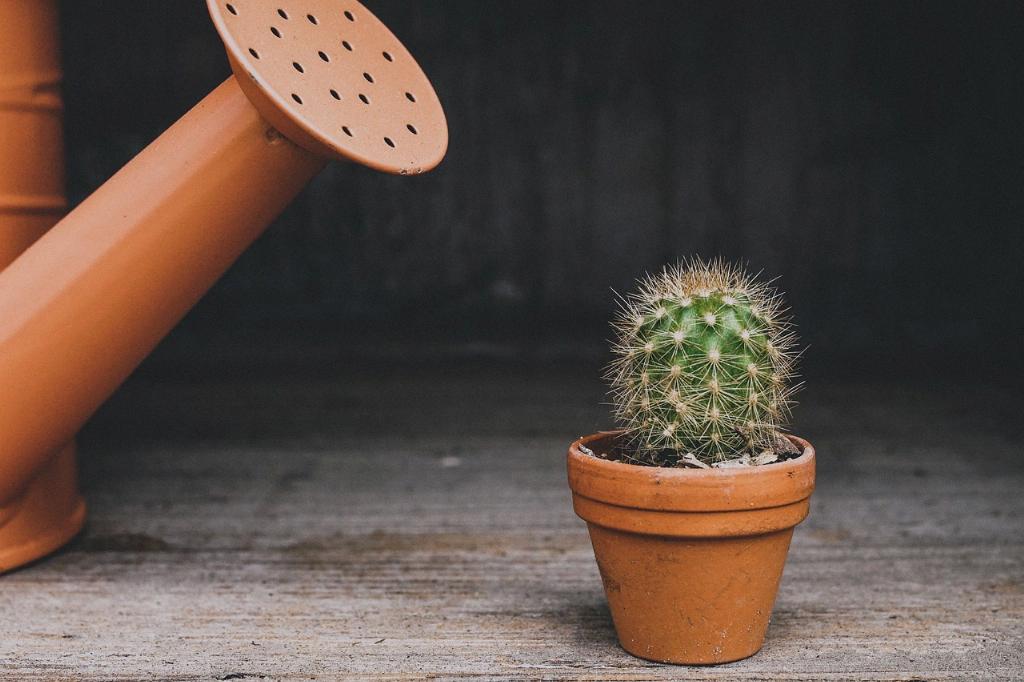When it comes to watering your cactus, it’s crucial to understand that these plants have unique water requirements due to their succulent nature. Cacti are adapted to arid environments, storing water in their thick stems to sustain themselves during dry periods. Therefore, overwatering can be detrimental to their health and can lead to issues like root rot.
One of the key factors to consider when determining how much water your cactus needs is the dryness of the soil. It’s essential to allow the soil to dry out completely between waterings to prevent moisture-related problems. Before reaching for your watering can, always check the moisture level by inserting your finger into the soil. If it feels dry all the way through, it’s time to water your cactus.
If you’re someone who prefers a more precise approach, you can opt to measure the amount of water you give to your cactus. This method ensures that you’re not inadvertently overwatering your plant, which can be just as harmful as underwatering. A general guideline is to use a 1/4 to 1/2 cup of water every week or two, depending on the season and environmental conditions.
Keep in mind that the watering needs of your cactus may vary based on factors such as the type of cactus, the size of the pot, the temperature, and humidity levels. Desert cacti, for example, typically require less water than jungle cacti due to their natural habitat. It’s essential to familiarize yourself with the specific requirements of the cactus species you have to ensure optimal growth.
Understanding the seasonality of your cactus can also help you adjust your watering schedule accordingly. During the active growing season, which is typically in spring and summer, your cactus may require more frequent watering to support its growth and blooming. Conversely, in the dormant winter months, you’ll want to scale back on watering to mimic its natural cycle.
When watering your cactus, it’s essential to do so carefully to avoid waterlogging the soil. Ensure that the pot has proper drainage holes to allow excess water to escape, preventing the roots from sitting in stagnant water. Water your cactus slowly and evenly, allowing the water to penetrate the soil and reach the roots.
In addition to proper watering, it’s beneficial to observe your cactus for signs of hydration or dehydration. A well-hydrated cactus will appear plump and firm, while a dehydrated cactus may show signs of wilting or discoloration. By paying attention to these visual cues, you can adjust your watering routine to meet the needs of your plant.
For cacti grown indoors, factors such as air circulation and sunlight exposure can influence their water requirements. Be mindful of the conditions in which your cactus is placed, as they can impact how quickly the soil dries out and how frequently you’ll need to water your plant. Proper environmental conditions can contribute to the overall health and vitality of your cactus.
Remember that when in doubt, it’s better to underwater your cactus than to overwater it. Cacti are resilient plants that can withstand periods of drought, whereas excessive moisture can be detrimental and lead to root rot. By adopting a cautious approach to watering and paying attention to the needs of your cactus, you can help them thrive and flourish in your care.
In conclusion, the question of how much water cactus ultimately boils down to finding the right balance between hydration and soil dryness. By following the guidelines of allowing the soil to dry out between waterings, using a measured amount of water, considering the plant’s specific requirements, and adapting to seasonal changes, you can provide your cactus with the ideal conditions for growth and longevity. With a mindful approach to watering, you can enjoy a healthy and vibrant cactus collection in your home or garden.

